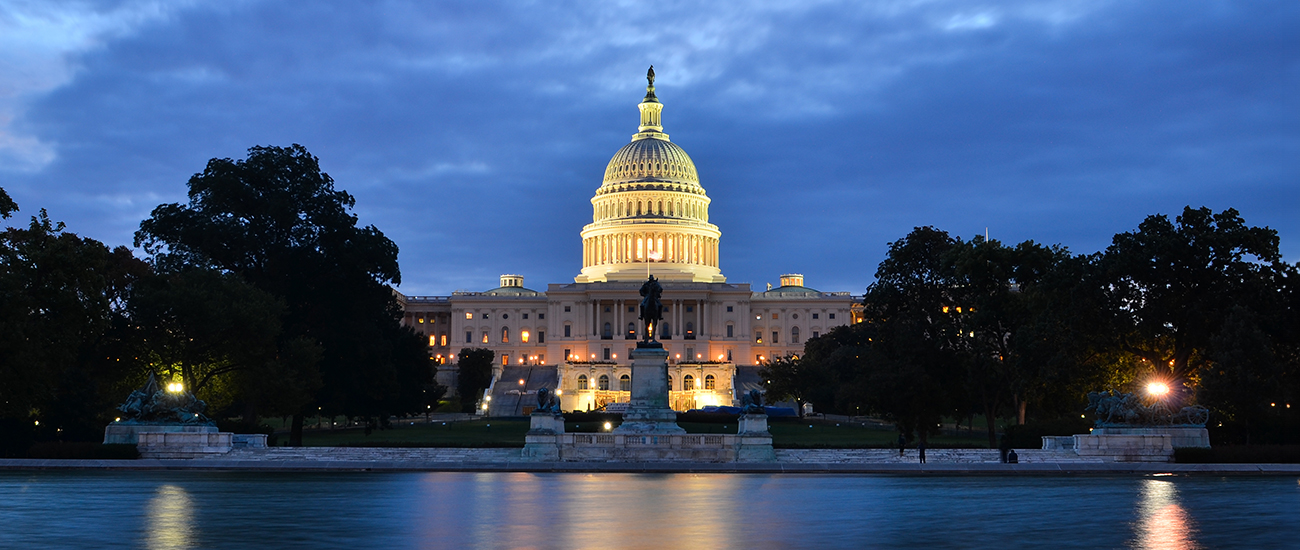- Contact Us Now: (202) 589-1834 Tap Here to Call Us
Trump’s Revocation of the Biden-Harris Executive Order on Competition: What It Means for Businesses and Mergers
On August 13, 2025, President Donald Trump issued an executive order revoking Executive Order 14036, the Biden-Harris administration’s 2021 directive aimed at promoting competition in the American economy. This move signals a shift in federal competition policy, drawing praise from business groups and criticism from consumer advocates. FTC Chairman Andrew N. Ferguson hailed the decision as a break from “failed policies,” emphasizing a focus on free markets and innovation. In this blog post, we’ll explore the background of the original order, the details of its revocation, its broader implications, and what businesses—particularly those eyeing mergers—can expect under the new administration.
Background on the 2021 Executive Order
Executive Order 14036, titled “Promoting Competition in the American Economy,” was signed by President Joe Biden on July 9, 2021. Its core purpose was to launch a “whole-of-government effort” to combat what the administration saw as excessive market concentration and anti-competitive practices that harmed consumers, workers, and small businesses. The order contained 72 specific provisions designed to address these issues across various sectors.
Key goals included:
- Strengthening antitrust enforcement to challenge monopolistic behaviors and prior mergers that had consolidated power.
- Promoting worker rights by limiting non-compete agreements and enhancing labor market competition.
- Supporting consumer access to affordable goods and services, such as over-the-counter hearing aids and broadband “nutrition labels” for transparency.
The order directed over a dozen federal agencies to take action. For instance:
- The Federal Trade Commission (FTC) and Department of Justice (DOJ) were instructed to vigorously enforce antitrust laws, including reviewing and challenging past mergers in high-concentration sectors like technology, healthcare, and labor markets.
- The Department of Agriculture (USDA) was tasked with bolstering rules under the Packers and Stockyards Act to protect farmers and enable easier equipment repairs (advancing the “right to repair” movement).
- The Federal Communications Commission (FCC) was encouraged to reinstate net neutrality rules to prevent internet service providers from stifling competition.
Specific industries targeted included:
- Technology: Scrutiny of Big Tech mergers and practices that limited innovation.
- Agriculture: Protections against exploitative practices by large agribusinesses.
- Pharmaceuticals and Healthcare: Efforts to curb drug price hikes through merger reviews and competition in medical markets.
- Labor and Broadband: Bans on excessive non-competes and promotion of open internet access.
The order also established the White House Competition Council, a 15-member body to coordinate these efforts across agencies. Critics at the time argued it represented overreach, while supporters viewed it as a necessary response to rising corporate power, which they claimed led to higher prices and fewer choices for Americans.
Under the Biden-Harris administration, this framework led to stricter merger guidelines in 2023, increased FTC and DOJ challenges to deals, and initiatives that blocked or modified high-profile mergers in sectors like tech and groceries.
The Revocation: What Happened?
President Trump’s revocation was straightforward and immediate. The new executive order, issued on August 13, 2025, simply states: “Executive Order 14036 of July 9, 2021 (Promoting Competition in the American Economy), is hereby revoked.” It includes standard general provisions ensuring no impairment of existing agency authorities or creation of new legal rights.
The White House framed this as part of a broader agenda to dismantle “burdensome” regulations from the previous administration. The Justice Department quickly endorsed the move, announcing an “America First Antitrust” approach that prioritizes free markets over what it called the “overly prescriptive and burdensome” policies of the Biden era. This includes streamlining merger reviews and reinstating practices like early terminations for uncontroversial deals.
The revocation aligns with other recent Trump actions, such as targeted executive orders on lowering drug prices and reducing regulatory barriers, rather than a sweeping, multi-agency mandate.
What Does the Revocation Mean?
The revocation marks a philosophical pivot in U.S. competition policy. The Biden-Harris order was criticized by some as encouraging “top-down” regulations that picked winners and losers, fostering hostility toward mergers and acquisitions (M&A). By withdrawing it, the Trump administration aims to let markets operate more freely, with the government focusing on enforcing existing antitrust laws passed by Congress rather than expanding regulatory oversight.
Key implications include:
- End of the White House Competition Council: This inter-agency body, which coordinated efforts on issues like credit card fees and app store practices, is dissolved, potentially reducing holistic government scrutiny of anti-competitive behaviors.
- Shift Away from Strict Merger Scrutiny: The Biden-era guidelines made it harder for large deals to pass muster, leading to blocked mergers (e.g., in airlines and tech). Trump’s approach emphasizes “tailored action” to protect consumers without blanket opposition to consolidation.
- Broader Economic Focus: Proponents argue this will promote growth, innovation, and lower costs by reducing regulatory burdens. Critics, however, warn it could lead to higher prices, fewer choices, and greater corporate power, as seen in statements from figures like Sen. Amy Klobuchar, who called it a “step backward” for consumers and workers.
On social media, reactions vary: Some users celebrate it as a win for innovation and against bureaucratic overreach, while others decry it as favoring big business at the expense of everyday Americans, potentially costing billions in fees and losses.
FTC Chairman’s Statement
FTC Chairman Andrew N. Ferguson issued a strong endorsement of the revocation, stating:
“America’s markets are the most dynamic on Earth, responsible for enriching the entire world through technological innovations, lifting countless people out of poverty, and inspiring other countries to emulate our economic system. Our markets thrive when they operate freely and when the Federal government does not pick winners and losers but allows businesses to grow and innovate.
Today’s withdrawal of the Biden-Harris Executive Order on competition marks another break between the last Administration’s failed policies and the Trump-Vance Administration’s focus on protecting everyday Americans from anticompetitive practices through tailored action, promoting economic growth, and ensuring that American workers benefit from competition for their labor.
The now-withdrawn Executive Order encouraged top-down competition regulations, and established a flawed philosophical underpinning for the Biden-Harris Administration’s undue hostility toward mergers and acquisitions. Consistent with President Trump’s recent Executive Orders, the Trump-Vance FTC is devoting its resources to enforcing the antitrust laws passed by Congress, for the benefit of all American consumers and workers—lowering the cost of living, improving the quality of goods and services, fostering new innovations, and leading to ever-greater prosperity for our Nation.”
This statement underscores the administration’s view that the prior order stifled growth, positioning the FTC to prioritize consumer benefits through targeted enforcement.
What Should Businesses Expect from Trump Administration Competition Policy on Mergers?
For businesses, particularly those in merger-heavy sectors like tech, healthcare, and agriculture, the revocation heralds a more permissive environment. Here’s what to anticipate:
| Aspect | Biden-Harris Approach | Trump-Vance Approach | Implications for Businesses |
| Merger Review Process | Strict guidelines (2023 revisions) emphasizing potential harms, leading to more challenges and blocks. | Streamlined Hart-Scott-Rodino (HSR) reviews, reinstatement of early terminations for non-controversial deals. | Faster approvals, lower costs, and reduced uncertainty for M&A activity. Expect a surge in deals as regulatory hurdles drop. |
| Consent Decrees and Settlements | Rare use; preference for outright blocks. | More frequent, “well-crafted” decrees to resolve issues without halting mergers. | Businesses can negotiate fixes (e.g., divestitures) rather than face total rejection, making large-scale consolidations viable again. |
| Antitrust Enforcement | Whole-of-government push, challenging past mergers in tech, pharma, etc. | Focused on “America First” free markets, enforcing congressional laws without expansive directives. | Less hostility toward “big business”; easier for companies to pursue growth through acquisitions, but still risks if clear violations occur. |
| Industry-Specific Impacts | Heightened scrutiny in agriculture (e.g., farmer protections), tech (e.g., app stores), and healthcare (e.g., drug pricing). | Tailored actions via separate EOs (e.g., drug prices), less emphasis on sector-wide crackdowns. | Agribusinesses and tech firms may see fewer barriers to expansion; however, critics warn of potential monopolies leading to higher consumer costs. |
Overall, businesses should prepare for a pro-growth stance that favors innovation and efficiency. The U.S. Chamber of Commerce applauded the move, noting it entrusts consumers to “pick winners” in a competitive landscape. That said, not all views are positive—some analysts predict risks like reduced innovation from unchecked consolidation and higher prices for essentials. Companies should monitor DOJ and FTC actions closely, as enforcement will now be more case-by-case.
Conclusion
Trump’s revocation of EO 14036 resets the competition landscape, moving away from aggressive regulatory intervention toward market-driven policies. While this could unleash economic dynamism and ease M&A for businesses, it raises questions about long-term consumer protections. As the administration implements its vision, stakeholders from Wall Street to Main Street will be watching—and debating—the outcomes. Stay tuned for updates as this policy shift unfolds.
Andre Barlow
202-589-1838




